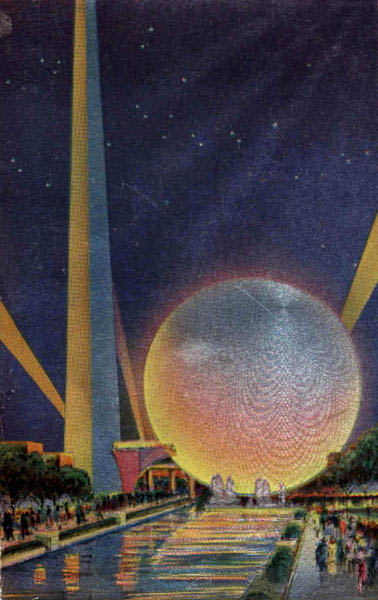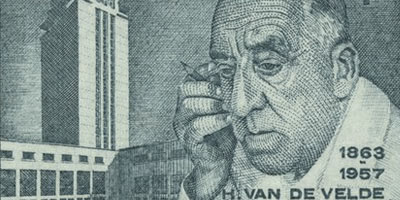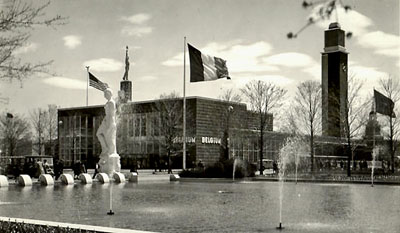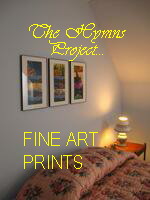
The Trylon and Perisphere as seen on a tinted postcard from the New York World's Fair.

Henri Van De Velde, Art Nouveau architect, who designed the Belgian Pavilion for the 1939 World's Fair.
It was almost ten years since the beginning of the Great Depression. The United States still struggled with high unemployment and economic problems that arguably were prolonged by the policies of Herbert Hoover and FDR. Then the nations of the world came to Flushing Meadow Park in New York. The World's Fair would show a world of the future. New architecture, new roads, new appliances and a better life were portrayed in a variety of displays.
As powerful people in Europe schemed to remake the world under their forced leadership, companies such as General Motors rolled out their plan to remake the world with new technology. Grandma probably saw a new automatic washing machine at the fair but she wouldn't actually own one until the great war was over.
Belgium chose Art Nouveau pioneer Henri Van De Velde [1.] to design its pavilion at the fair. It's distinctive tower featured a 35 bell carillon. As the fair drew to a close in 1940, Europe was at war. Soon the world would be engaged in fierce conflict. Germany had occupied Belgium and the Belgian government was in exile. Virginia Union University obtained the pavilion and raised the money to reassemble it in Richmond.

The Belgian Pavilion as it appeared in Flushing Meadow Park for the 1939 New York World's Far. Note Van De Velde's distinctive vertical glass block detail on the tower which has been lost in modern restorations of the building.

The Belgian Pavilion as reconstructed at Virginia Union University. The tower's glass block detail is still visible.




No comments:
Post a Comment